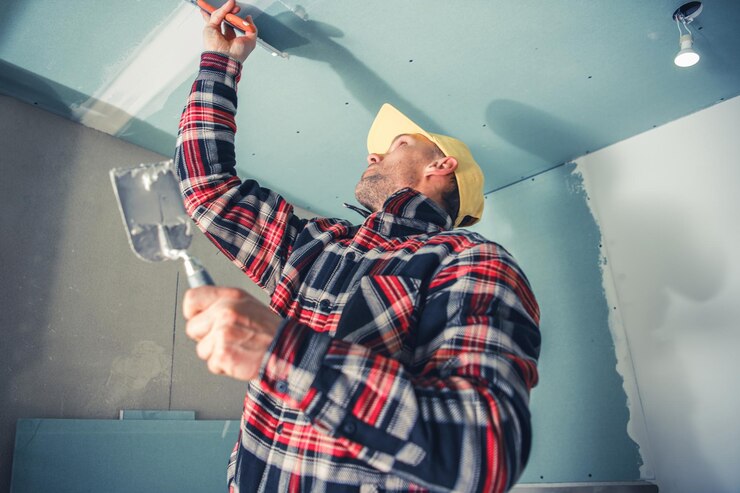
Dreaming of a stunning tile floor but worried about the cost of ripping out your existing vinyl? You’re not alone. Fortunately, there’s a budget-friendly solution that can transform your space without the hassle of a complete floor replacement: tile over vinyl flooring.
This approach offers a multitude of benefits, making it an attractive option for homeowners seeking an affordable and stylish upgrade. Let’s delve deeper into the world of tile over vinyl flooring and explore its potential to revitalize your home.
Why Consider Tile Over Vinyl Flooring?
There are several compelling reasons to consider tile over vinyl flooring for your next renovation project.
Cost-Effective: Compared to a complete floor replacement, tiling over vinyl flooring is significantly cheaper. You can save on labor costs associated with removing the old vinyl and disposal fees.
Time-Saving: Tiling over vinyl flooring is a faster process than a complete tear-out and replacement. This minimizes disruption to your daily routine and allows you to enjoy your new floor sooner.
Preserves Existing Subfloor: In many cases, the existing vinyl flooring is adhered to a sound subfloor. Tiling over vinyl flooring eliminates the need to disturb the subfloor, saving time and effort.
Variety and Style: With a vast array of tile options available, you can create a unique and stylish floor that complements your décor. From classic ceramics to modern porcelains, the possibilities are endless.
Durability and Easy Maintenance: Tile flooring is renowned for its durability and ease of maintenance. It’s resistant to scratches, stains, and moisture, making it ideal for high-traffic areas like kitchens and bathrooms.
Suitability for Tile Over Vinyl Flooring
While tile over vinyl flooring offers numerous advantages, it’s crucial to assess your existing vinyl flooring’s suitability before diving into the project. Here are some key factors to consider:
Vinyl Condition: The vinyl flooring should be in good condition, free from rips, tears, or extensive wear. Loose or damaged vinyl won’t provide a stable base for the tiles and can lead to future problems.
Vinyl Type: Not all types of vinyl are suitable for tiling over. Sheet vinyl securely bonded to a subfloor is generally a good candidate. However, cushioned vinyl or luxury vinyl planks (LVP) with a click-lock mechanism are not recommended for this application.
Floor Height: Adding a layer of tile will increase the overall floor height. Ensure doorways and transitions to other flooring types can accommodate this change in height.
Preparing Your Vinyl Floor for Tiling
Once you’ve determined that your vinyl flooring is suitable for tiling over, it’s essential to prepare the surface properly to ensure a successful installation.
Thorough Cleaning: Meticulously clean the vinyl flooring using a degreaser to remove dirt, grime, and any wax residue. A clean surface will ensure optimal adhesion between the tile adhesive and the vinyl.
Roughening the Surface: Since vinyl is smooth, scuffing the surface with sandpaper or a rough-grit grinding pad creates a better texture for the tile adhesive to bond with.
Addressing Unevenness: If the vinyl flooring has minor imperfections, use a self-leveling compound to create a smooth and even surface for tile installation.
Priming (Optional): In some cases, applying a primer specifically designed for vinyl substrates can further enhance the adhesion between the tile adhesive and the vinyl flooring.
Installing Tile Over Vinyl Flooring
Important Note: While DIY enthusiasts might be tempted to tackle tile over vinyl flooring installation themselves, it’s recommended to consult a professional tile installer for optimal results. Professional installers possess the expertise and experience to ensure a seamless and long-lasting installation.
However, if you’re comfortable with DIY projects, here’s a general overview of the installation process:
Gather Necessary Materials: You’ll need tile adhesive (thinset mortar) suitable for vinyl substrates, tiles, grout, grout sealer, spacers, a notched trowel, a tile cutter, and safety gear (gloves, eye protection).
Spread the Adhesive: Using a notched trowel, spread a thin layer of the tile adhesive onto the prepared vinyl surface.
Laying the Tiles: Begin laying the tiles from a corner, carefully ensuring proper alignment and spacing with the help of spacers.
Cutting Tiles: Use a tile cutter to precisely cut tiles to fit around edges and fixtures.
Grouting: Once the tile adhesive has cured, apply grout to fill the spaces between the tiles.
Sealing the Grout: After the grout has dried completely, apply a grout sealer to protect it from stains and moisture.
Conclusion
Tile over vinyl flooring presents a compelling solution for homeowners seeking a budget-friendly and stylish floor renovation. It offers significant cost and time savings compared to a complete floor replacement, while preserving the existing subfloor and minimizing disruption to your daily life. With a wide variety of tile options available, you can create a beautiful and durable floor that complements your décor.
However, it’s crucial to assess your existing vinyl flooring’s suitability before proceeding. Ensure the vinyl is in good condition, securely bonded to the subfloor, and the right type for tiling over. Proper preparation involving thorough cleaning, roughening the surface, and addressing unevenness is essential for a successful installation.
While professional installation is recommended for optimal results, DIY enthusiasts can tackle the project with the proper knowledge and tools. Remember, careful planning, meticulous preparation, and following the recommended installation steps are key to achieving a stunning and long-lasting tiled floor over your existing vinyl.
FAQ
Q: Is any type of vinyl flooring suitable for tiling over?
A: No, not all vinyl flooring is suitable. Sheet vinyl securely bonded to a subfloor is generally a good candidate. However, cushioned vinyl or luxury vinyl planks (LVP) with a click-lock mechanism are not recommended.
Q: What are the signs that my vinyl flooring is not suitable for tiling over?
A: If your vinyl flooring is loose, ripped, extensively worn, or has a cushioned backing, it’s not a good candidate for tiling over.
Q: Can I install tile over vinyl flooring myself?
A: While DIY-enthusiasts can tackle the project, professional installation is recommended for optimal results. Professionals possess the expertise and experience to ensure a seamless and long-lasting installation.





